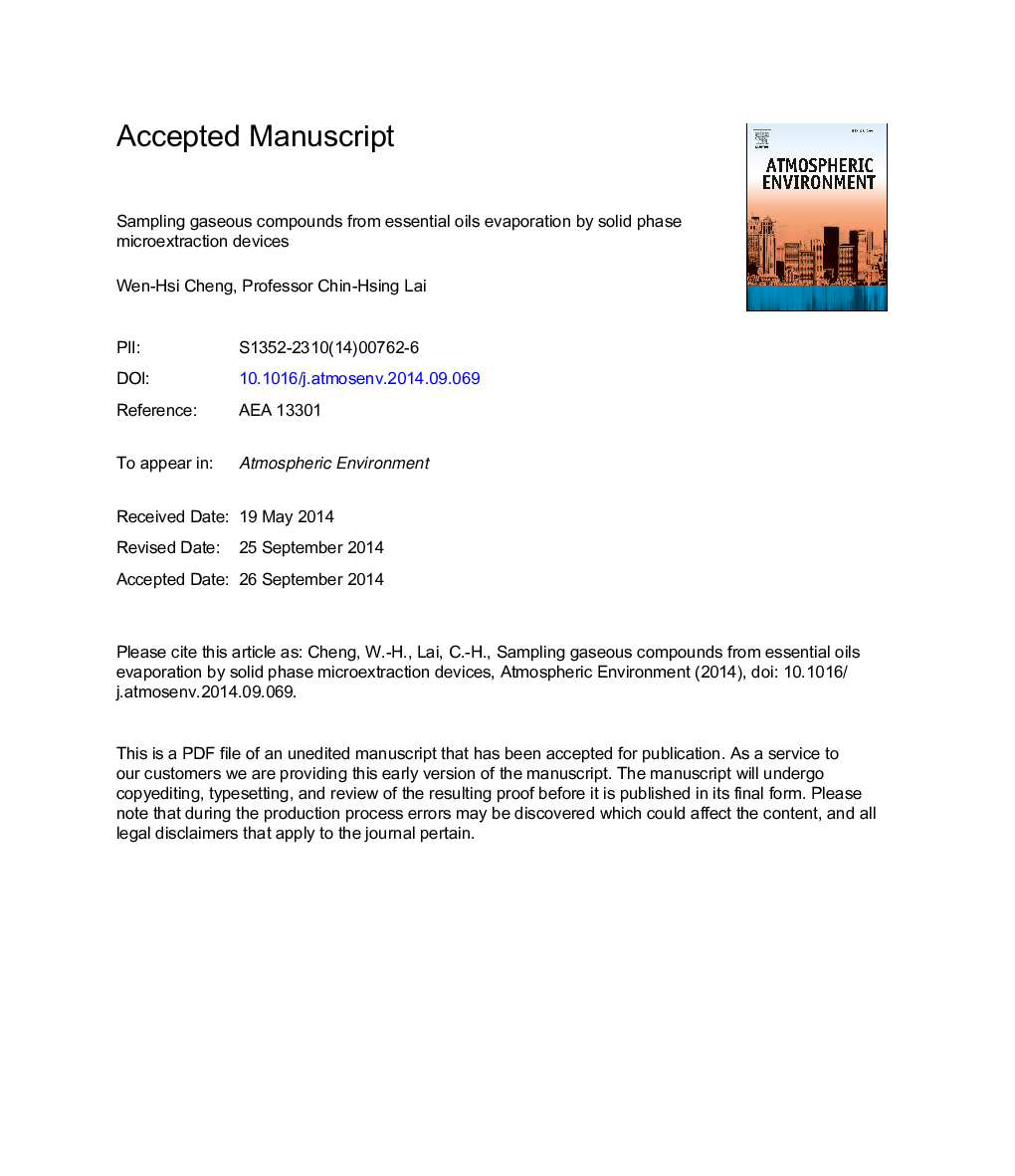| Article ID | Journal | Published Year | Pages | File Type |
|---|---|---|---|---|
| 6339106 | Atmospheric Environment | 2014 | 29 Pages |
Abstract
Needle trap samplers (NTS) are packed with 80-100 mesh divinylbenzene (DVB) particles to extract indoor volatile organic compounds (VOCs). This study compared extraction efficiency between an NTS and a commercially available 100 μm polydimethylsiloxane-solid phase microextration (PDMS-SPME) fiber sampler used to sample gaseous products in heated tea tree essential oil in different evaporation modes, which were evaporated respectively by free convection inside a glass evaporation dish at 27 °C, by evaporation diffuser at 60 °C, and by thermal ceramic wicks at 100 °C. The experimental results indicated that the NTS performed better than the SPME fiber samplers and that the NTS primarily adsorbed 5.7 ng ethylbenzene, 5.8 ng m/p-xylenes, 11.1 ng 1,2,3-trimethylbenzene, 12.4 ng 1,2,4-trimethylbenzene and 9.99 ng 1,4-diethylbenzene when thermal ceramic wicks were used to evaporate the tea tree essential oil during a 1-hr evaporation period. The experiment also indicated that the temperature used to heat the essential oils should be as low as possible to minimize irritant VOC by-products. If the evaporation temperature does not exceed 100 °C, the concentrations of main by-products trimethylbenzene and diethylbenzene are much lower than the threshold limit values recommended by the National Institute for Occupational Safety and Health (NIOSH).
Related Topics
Physical Sciences and Engineering
Earth and Planetary Sciences
Atmospheric Science
Authors
Wen-Hsi Cheng, Chin-Hsing Lai,
